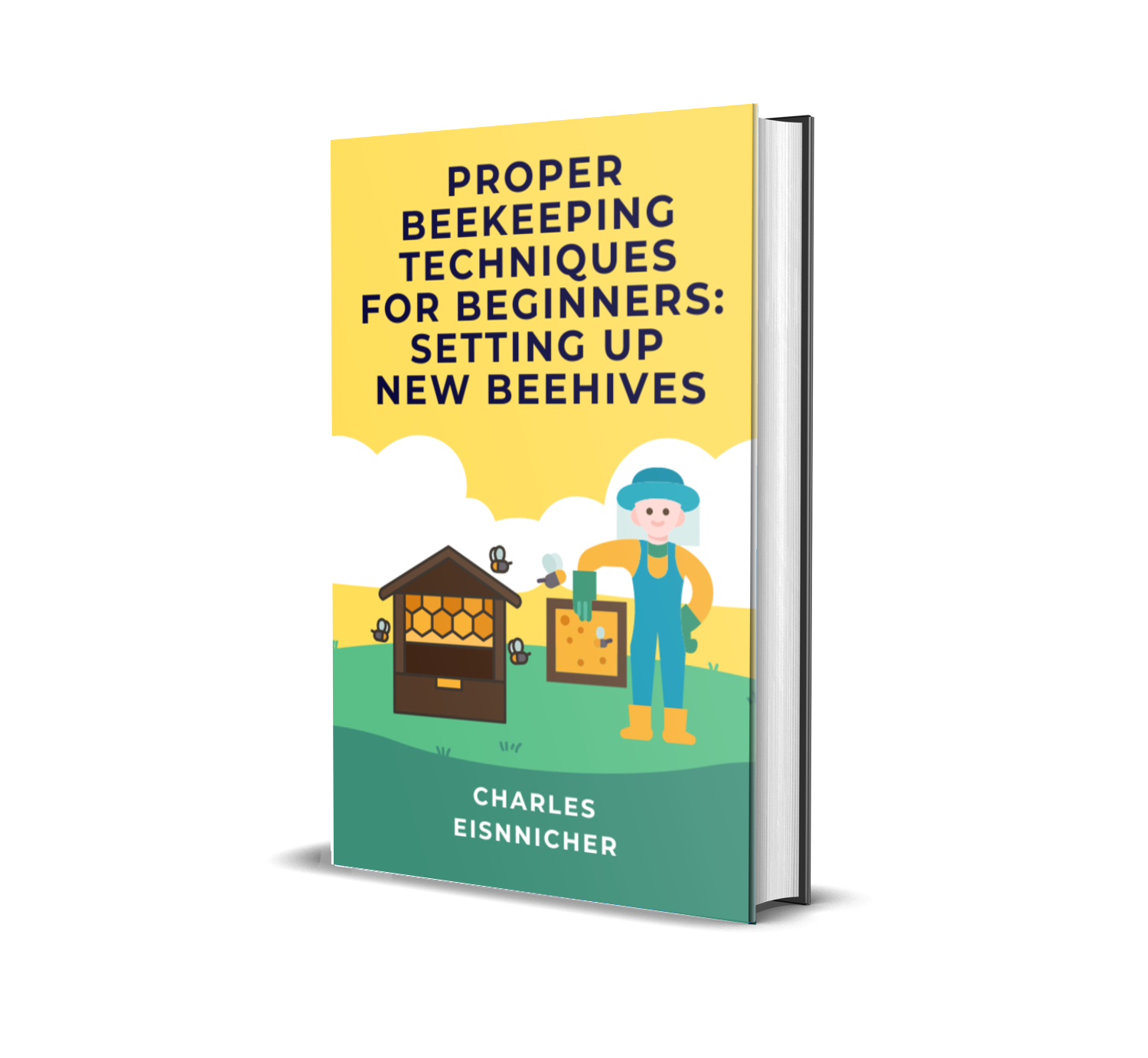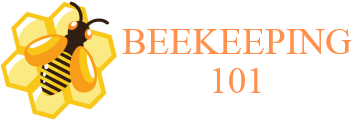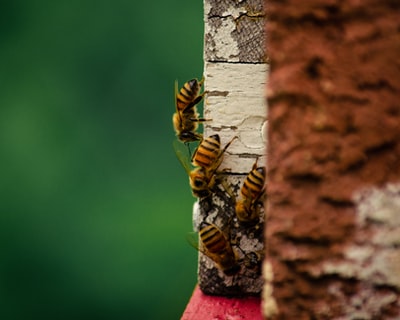Whether you want to become an apiarist, or are just curious about bees, beekeeping for dummies can be a great place to start. By learning the basics of beekeeping, you can gain a better understanding of bee biology and behavior, what it takes to manage a hive, and all the potential benefits of having your own bees.
Even if you’re just starting out and have no idea what you’re getting into, don’t worry – beekeeping for dummies will break it down into manageable steps and help explain, in layman’s terms, what you need to know.
Are you just starting out with beekeeping, but don’t know where to start? Then you’ve come to the right place! This article will provide a comprehensive beginners guide to bee keeping; covering everything you need to know to get started, from the types of bees, to hives and the best ways to protect and maintain your beehive. We’ll also cover the best techniques to harvest your honey and when to start your apiary.
Read on and get the inside scoop on the wonderful world of bee keeping!
Table of Contents
The Basics of Beekeeping
Beekeeping is an enjoyable and rewarding hobby that is centuries old and enjoyed around the world. It involves the maintenance of honeybees in artificial hives, and is done mainly to harvest the honey they produce and the other products they provide.
Aspiring beekeepers will need to first properly equip themselves with the right supplies, such hives and protective gear like veils and gloves. Additionally, they’ll need to become acquainted with their local regulations regarding beekeeping, and obtain supplies of bees, either through capture or purchase.
Once the hives are stocked and setup, beekeepers typically maintain them by supplementing diets, checking for pests and diseases, and harvesting the honey. It is an exciting venture best undertaken with an understanding of the many nuances and nuances that are involved in keeping these fascinating creatures.
Different Types of Bees
Bees are essential and essentialized pollinators, belonging to the family Apidae, that come in a variety of sizes and shapes. The dominant bee species are solitary bees, also known as stingless bees, and social bee species, like honeybees and bumblebees.
Solitary bees create nests in cavities of wood or in the ground, while social bees form colonies in hives, often with one or more queens. All bees feed on pollen and nectar and use their long tongues, feathers, or claws to pollinate flowers, allowing them to pollinate the world’s most important crops.
By doing so, they are one of the main contributors to global food security.

Get A Free Downloadable Ebook To Teach You How To Set Up New Beehives
Give Me My Free eBookProtective Gear and Equipment
Protective gear and equipment is essential for anyone engaging in any activity that could potentially be hazardous. It serves as a strong line of defense against possible injury and can help to minimize impacts from unexpected accidents.
Whether participating in physical sports or engaging in outdoor activities in harsh climates, wearing appropriate protective attire and using any associated equipment, such as helmets and knee pads, is key to avoiding injuries. In addition, it’s important to make sure that the protective gear is of the highest quality and well-fitted to ensure the utmost protection.
For activities in extreme temperatures, dressing in multiple layers can bring added safety. Everyone should take precautionary measures when engaging in potentially risky activities to guarantee safety and protect against any potential harm.
Locating the Best Place to Keep Bees
Finding the best place to keep bees can be quite a challenge. From considerations such as amount of sun, access to water, and the size of the area, there are many variables to consider when choosing the perfect home for your beehive.
It is important to place your hive in an area that gets plenty of sunlight, such as in an open field or a meadow, in order to promote warmth and allow bees to forage for nectar and pollen. Access to water sources within a few hundred feet of the hive is also essential for the bees to access honey, and the area should have enough space for the bees to forage for forage for nectar, pollen, and propolis.
Fences or barriers should also be considered to protect the hive from predators, as well as from wind and rain. Ultimately, the best place to keep bees is an area that is suitable and safe, while also providing a sufficient food source and shelter.
Stocking Your Apiary
To create a successful apiary, beekeepers must stock the apiary with bees. Purchasing a colony of bees, commonly referred to as a package, is often the easiest way to get started.
The package will contain a queen, workers, and drones, and they can be purchased from a local bee supply store or online. To install the bees, the beekeeper needs to add them to an existing colony or hive.
The hive should have plenty of resources including nectar and pollen to help the bees adjust after their voyage. In addition, beekeepers should always inspect their hives on a regular basis to ensure that the bee population is healthy and that the resources are adequate.
Finally, beekeepers should also install external defences, such as screens, to keep other insects out of the hive. Stocking an apiary is a complex process but with the right resources, it can be achieved.
Feeding Bees
Feeding bees is often necessary to ensure that they are well-nourished, especially during the winter months when there is a lack of natural food sources. Beekeepers must provide liquid sugar or sugar syrup to their colonies by either spraying it onto the bees or providing the syrup in a shallow bowl where the bees can access it easily.
This sugar serves as a great source of energy, helping bees thrive and stay healthy. Furthermore, they must also provide pollen supplement feeds that are full of proteins and vitamins, which are essential for the development of healthy adult bees and increase the reproductive success of the colony.
Feeding bees is necessary to ensure their survival, so it is important for beekeepers to understand the importance of supplementing their colonies with a nutritious diet.
Breeding and Floating Your Colonies
Breeding and floating colonies of microorganisms is a common scientific process, used in fields such as microbiology, biotechnology, and genetics. By controlling the parameters of the environment, such as pH and temperature, samples of the organism population can be gathered with relative ease.
This allows for tracking of growth, mutation, and adaptation of the organisms under different conditions. Floating colonies are also useful for separating certain organisms from the population in order to be tested further.
As with all biological processes, a carefully regulated laboratory environment is important for accurate results. When performed successfully, these techniques can yield a wealth of information about the studied organisms and their characteristics.
Common Bee Diseases
Bees are an incredibly important part of our environment, so it is important to be aware of the various diseases that can affect them. Common bee diseases include American foulbrood, European foulbrood, chalkbrood, and nosema.
American foulbrood is caused by a bacterial fungus growing on bee larva, while European foulbrood is caused by a bacterial infection on bee larvae that can quickly spread amongst a colony of bees. Chalkbrood is caused by a fungus that affects larvae while they are still pupating in the cell.
Lastly, nosema is caused by a microsporidium organism which can lead to digestive failures and decreased lifespan of the bees. In order to prevent these diseases, beekeepers need to ensure that the hives are kept clean, healthy, and free of mites.
Harvesting and Selling Honey
Harvesting and selling honey can be an entertaining and rewarding business venture. Honey collectors must be knowledgeable in beekeeping and the associated dangers of handling beehives and dealing with bee stings.
They must also be aware of the seasonal nature of beekeeping and the types of nectar plants bees will be foraging for. Once the honey is harvested, it can be processed, packaged, and sold to grocery stores, farmers markets, specialty shops, restaurants, and online retailers.
Honey is a versatile product, with endless possibilities for flavor combinations, depending on the type of nectar that was incorporated into the harvested honey. The price of honey will vary depeding on the region and the type of honey collected.
Ultimately, selling honey can be a fulfilling business opportunity if done correctly.
Tips for Success in Beekeeping
Beekeeping can be an enjoyable and rewarding hobby for those willing to invest time and resources into it. Firstly, it’s important to research the necessary equipment and protective gear needed for beekeeping, such as a beekeeper suit, hives, smokers, and hive tools.
Secondly, it’s important to find the proper placement for your hives. Too much sun or wind could be detrimental to your hive, so a south-facing site with relatively low wind would be ideal.
Thirdly, certain beekeeping activities require having an understanding of bee behavior. Familiarization with bee behavior will help ensure safe and successful bee management.
Lastly, regular hive inspections are key to successful beekeeping. Inspections should be done at least once a month so you can monitor the health and progress of your hive.
Following these tips will ensure your success as a beekeeper.
Wrap Up
Bee keeping certainly isn’t for everyone, but it’s rewarding to watch and be part of the process. With the right information and dedication you can become a successful beekeeper.
Not only do you get to observe nature but you also get to help on the attack against colony collapse disorder. So, if feeling connected to nature while helping gentling honeybees sounds good, then why not give it a go? All it takes is passion, dedication, and some time.
Let the pollination begin!
Charles

Get A Free Downloadable Ebook To Teach You How To Set Up New Beehives
Give Me My Free eBook







